Outdoor shoes
Outdoor shoes are an indispensable part of every person's life. We wear them every day and for this reason you should choose them not only according to their look, but also if they are comfortable and fullfill your requirements for the planned activity and terrain.
Our recommendations:
To begin your selection, it is necessary to determine the terrain requirements, the length of your trip/activity, the weight of the equipment you will carry and the weather you expect.
This is the foundation for the right selection. Based on these criteria, you can expect a safe and comfortable result.
- the worse the terrain and the heavier the equipment, the stronger the shoe should be
- for demanding terrain and for multi-day trips choose a shoe that is more waterproof (membrane, minimum amount of seams, sewn-in tongue)
Upper material:
Leather - A durable material, which is resistant to water and mechanical damage. With proper care, leather shoes can last almost forever. The disadvantage of leather is poorer breathability, which means that leather shoes must be thoroughly dried after each trip.
Leather with membrane - Provides a perfect guarantee of waterproof properties during active hiking. The membrane requires proper maintenance.
Synthetic materials and textiles - Lightweight and breathable materials with a good resistance to mechanical damage. Regular impregnation is necessary, or it is adviseable to purchase footwear containing a membrane.

Water resistant vs waterproof
There is no bad weather, there are only poorly selected clothes or shoes. If you are looking for shoes for spring or autumn, look for features like water resistance or waterproofing. If you are looking for shoes for the summer, choose shoes with a breathable upper.
Water resistance
The ability of the material to resistant water to a certain extent. It is a surface treatment that involves a regular renewal using protective sprays.
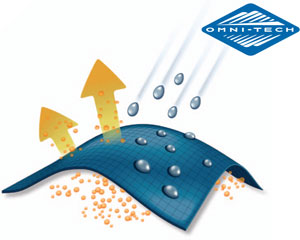
Waterproofing
It is an ability of the material not to allow water and moisture to pass through. Usually it is an upper material in combination with a membrane, which ensures the waterresistant properties. This variant also requires regular care using protective sprays. They protect the upper material, which can absorb moisture, which consequently increases the overall weight of the shoe and at the same time lowers the breathability of the membrane. In case of bad breathability, the moisture accumulates inside of the shoe. Protecting sprayes also protect colours and increase resistance to dirt.
Types of GORE-TEX membranes
Extended Comfort - this range does not offer heat insulation and so is suitable into warmer climates
Performance Comfort - only minimal heat retention even during demanding activities
Insulated Comfort - a membrane in combination with an insulating layer retains heat
When membranes are used, the shoes are always waterproof, breathable and therefore offer thermal comfort. This does not mean that you do not have to use protective sprays. You should treat the upper material with protective sprays, which creates a water resistant layer and which protects the surface from impurities while also improving the insulating function of the membrane. Waterproof shoes include a membrane, in our case the most known and mostly used Gore-Tex membrane.
Types of Outdoor Shoes

Hiking sandals with open construction
These are highly sought after and are suitable for everyday use in the summer. You can use them for hiking in the mountains thanks to their lightness and extremely good ventilation. The disadvantage is the minimal protection of the soles and more frequent pebble invasion. They are also a good choice for crossing small rivers and streams.

Closed hiking sandals
Closed construction hiking sandals are the perfect choice for anyone looking for something in between open sandals and hiking shoes. They are very lightweight and are ideal for walks in the city and for hikes in the mountains because they protect the feet from pebbles.
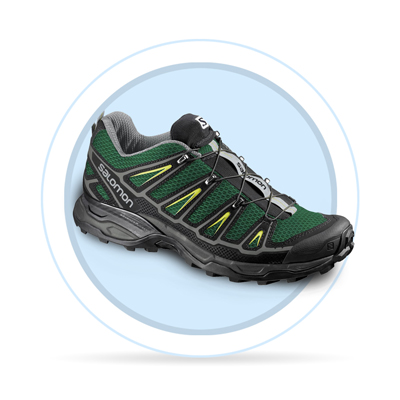
Fast trek shoes
A category created for fast movement in the mountains - walking or running with a small load. Suitable for day trips. Their base consists of a sturdy sole and feature a low weight. They combine elements that running shoes also use and at the same time provide the stability and security of hiking shoes. Most models in this category are created by the adidas and Salomon brands.
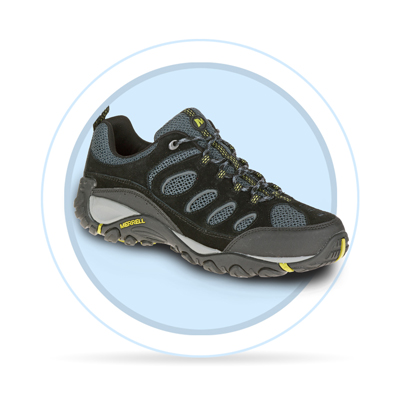
Low hiking shoes
Suitable for everyday use, light terrain and for non-week hiking with light luggage. Their uppers are resistant to mechanical damage and often feature a waterproof treatment or a membrane. They may be created from breathable synthetic materials or leather. They have a softer sole for better traction and higher comfort.
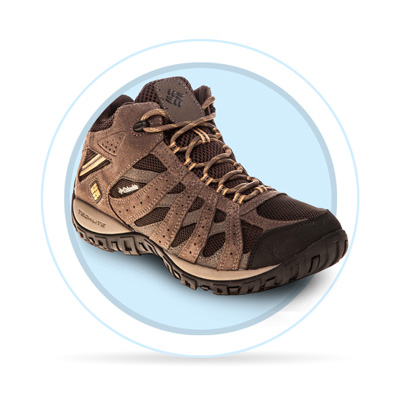
Medium-high hiking shoes
A compromise between low and high hiking shoes. Often feature an upper that combines textile material with leather, which lowers their weight. They are suitable for non-week hiking in heavier conditions.
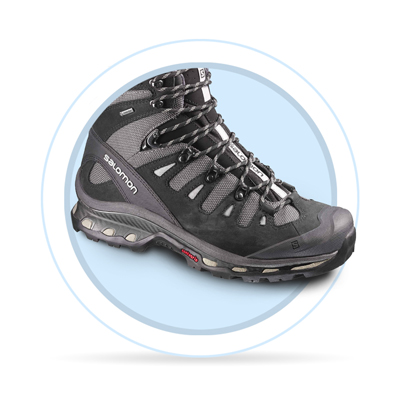
High hiking shoes
These feature ankle support and are mostly suitable for outdoor activities in heavy and medium terrain. Their construction consists of a sturdier skeleton, a sole with higher grippers and in most cases have a leather upper. They provide greater protection for the feet and ankles. Their uppers are resistant to mechanical damage and often feature a waterproof coating or membrane.
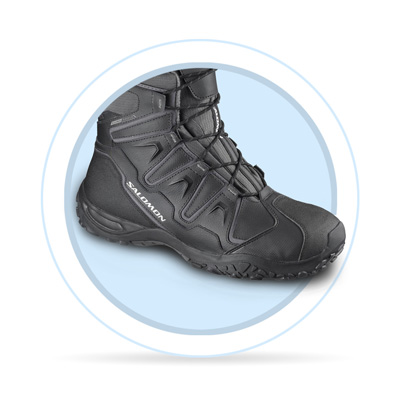
Winter hiking shoes
Suitable for rough or frozen terrain and adverse weather conditions. Their upper is waterproof and difficult to damage. They have thermal insulation that protects from the cold. Their soles are adapted to winter conditions.
